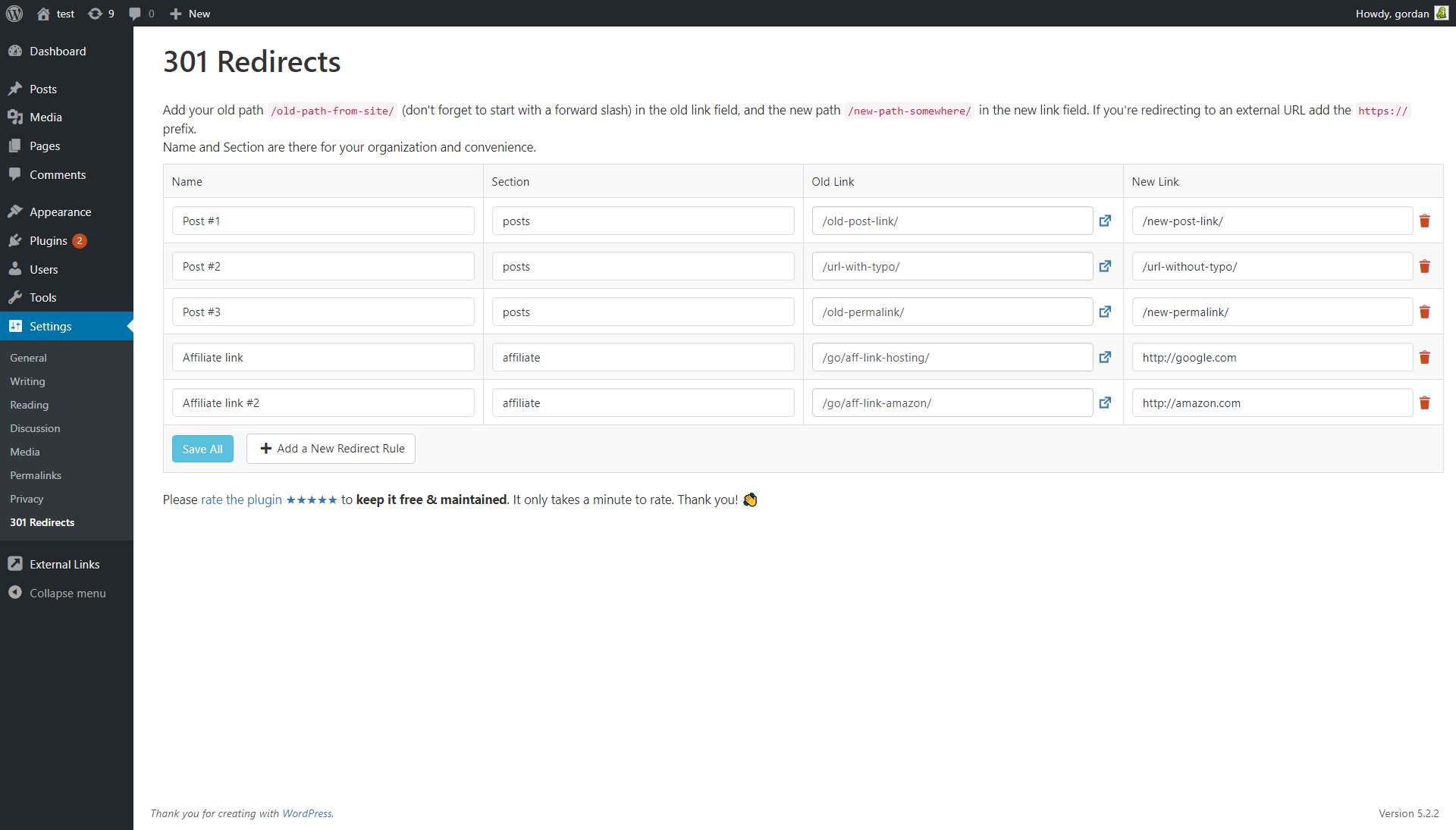Description
A perfect plugin for creating a new site from an old site or changing the domain name, and managing all of the redirects and broken URLs by using redirection.
Find the link to 301 Redirects in the main Settings menu.
404 error log can be found on the same page, and on the admin dashboard.
301 Redirects plugin creates a new table in the WP database called ‘WP_PREFIX_ts_redirects’ that stores all of your redirect rules and redirections. On plugin deactivation the table is not deleted. When you delete the plugin then the redirection table is deleted forever.
Why is the 404 error log limited to the last 50 errors?
By default, the 404 error log is limited to the last (chronologically) fifty 404 errors. Since the 404 log doesn’t use a custom database table for storage but rather an array saved in WP options, 50 is a safe number that ensures the 404 log works on all sites, that it doesn’t take up too much space in the database and that it doesn’t slow down the site.
The code imposes no limits on the log size and you can easily overwrite the default limit by using the 301_redirects_max_404_logs filter or by using the following code snippet to raise the limit to 200:
add_filter('301_redirects_max_404_logs', function($log_max) { return 200; }, 10, 1);
GDPR compatibility
We are not lawyers. Please do not take any of the following as legal advice.
301 Redirects does not use any 3rd party services or CDNs. It does create a 404 error log which saves the following info when a non-existing (404) page is opened: timestamp of the event, URL of the 404 page, user agent based on the user agent string from the user’s browser. No IP related data or any other identifiable user data is saved or processed. Based on that, we feel it’s GDPR compatible, but again, please, don’t take this as legal advice.


